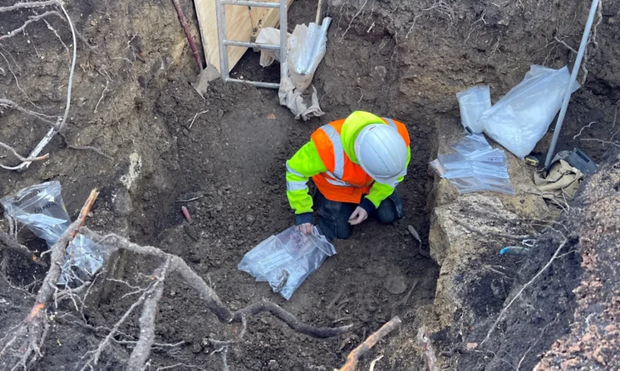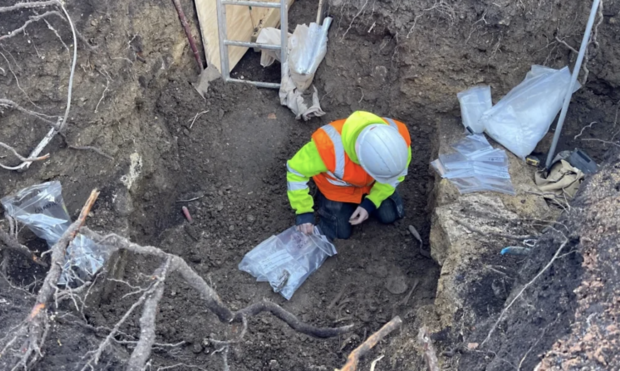More than 2 dozen human skeletons dating back more than 1,000 years found in hotel garden
Archeologists in the U.K. have unearthed more than two dozen human skeletons dating back more than 1,000 years in the garden of a hotel. The bones were first discovered last year during the planning for a new building at The Old Bell Hotel in Malmesbury, Wiltshire, according to archeology firm Cotswold Archeology.
Twenty-four of the skeletons were Anglo-Saxon women who were related maternally to several individuals. The other skeletons included men and children. The remains are believed to belong to members of a monastic community associated with Malmesbury Abbey, a 12th-century building of worship.
The skeletons, which dated to between 670 and 940 AD, can help researchers understand how the abbey, which was initially a monastery, functioned.

Cotswold Archeology
“We knew from historical sources that the monastery was founded in that period, but we never had solid evidence before this excavation,” said Assistant Publications Manager and Malmesbury resident Paolo Guarino. “The discovery includes remains from the Middle Saxon period, marking the first confirmed evidence of 7th- to 9th-century activity in Malmesbury.”
The archeology team was at the Old Bell Hotel, which dates back to 1220, as part of a community archeology event where volunteers dig 15 test pits around Malmesbury.

Cotswold Archeology
Earlier this year, Cotswold Archeology was enlisted by the U.S. government to help find a World War II pilot who crashed in a wooded area in England. The pilot was flying a B-17 when he crashed in East Anglia, an area that became the headquarters of the Allies’ so-called “Bomber War” during the 1940s, according to the National WWII Museum.
The U.S. government is working to identify several U.S. airmen who went missing or died during WWII. Most who have been identified were done so using DNA and dental records, but the archeology group was brought in for this complicated search because the crash site has long been buried.
“This excavation will not be easy — the crash crater is waterlogged and filled with 80 years’ worth of sediment, the trees and undergrowth are thick, and all soil must be meticulously sieved to hopefully recover plane ID numbers, personal effects, and any human remains,” the company said in a social media post showing images of the site.
Caitlin O’Kane
Caitlin O’Kane is a New York City journalist who works on the CBS News social media team as a senior manager of content and production. She writes about a variety of topics and produces “The Uplift,” CBS News’ streaming show that focuses on good news.
